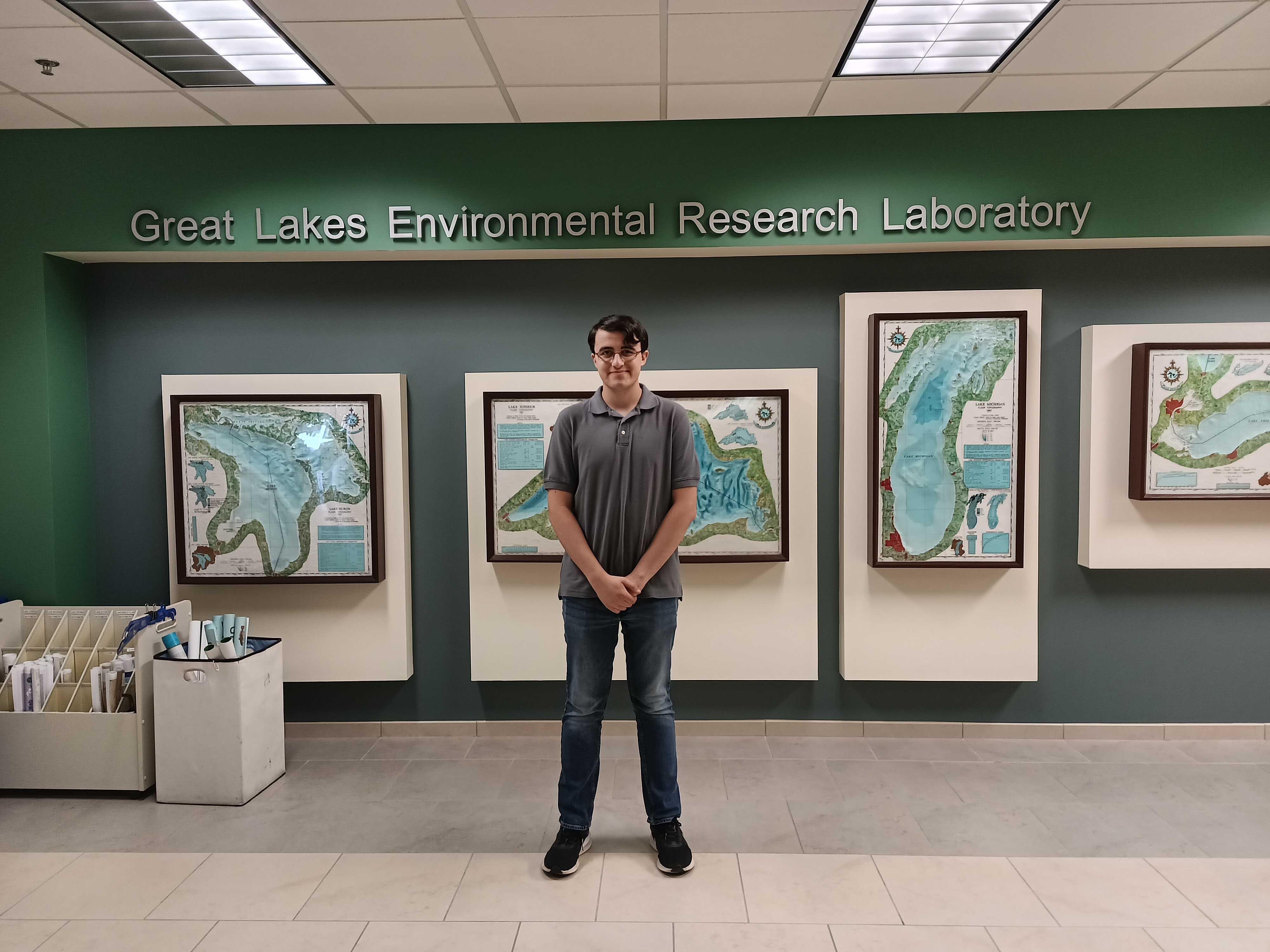Senior meteorology major and mathematics and astronomy minor Shaun Laurinaitis spent his summer taking advantage of SUNY Oswego’s extensive internship opportunities, including serving as a summer fellow for the Cooperative Institute for Great Lakes Research (CIGLR) under mentor Jia Wang of the U.S. National Oceanic and Atmospheric Administration.
Encouraged to apply for the fellowship by SUNY Oswego meteorology faculty member Scott Steiger, Laurinaitis eagerly awaited his acceptance.
“The two projects looked interesting,” Laurinaitis said. “One was relating to ice cover and one was relating to lake-effect storms which are both interesting to me, so I applied.”
Laurinaitis comes with a wealth of experience from his years on campus, including being a member of SUNY Oswego’s chapter of the American Meteorological Society, as well as a forecaster for SUNY Oswego's Lake Effect Storm Prediction and Research Center (LESPaRC) for the past two years. In this position, Laurinaitis creates forecasts once a week for local school districts as well at the local Department of Transportation to keep them informed on weather in the winter season.
Ultimately, Laurinaitis focused his research on decadal and interannual variability of ice cover on two areas of Lake Superior.
A summer of experiences
Starting off his summer, Laurinaitis had the opportunity to travel to Boulder, Colorado, to be part of an undergraduate leadership workshop with NCAR (National Center for Atmospheric Research). Together with 18 other undergraduate students, also meteorology majors, they took a week to cover leadership development topics such as diversity and inclusion, ethics and resume building workshops.
“We also got to hike up to a mountain research station,” Laurinaitis said. “We actually saw snow in June which was cool, and we also got to visit the Research Aviation Facility.”
After returning from Colorado, Laurinaitis spent his summer on research for CIGLR, hoping to gain more experience with the programming language Python, something he believes will aid him in his future career.
“This internship also exposed me a little bit more to research projects like I’ve done in class and for an internship I did last year that had to do with climate as well, so I’ve been able to continue with it,” Laurinaitis said. “This kind of research that I’ve been doing on climate –- I’ve been able to see just how important climate research is as opposed to broader research we are exposed to in classes.”
Laurinaitis and others focused on data and ice melt trends from Lake Superior over the course of 50 years, utilizing Python to plot these trends.
“In both of my two regions, which were in Lake Superior, we noticed a negative trend in the average ice cover in both the 50-year time period we were looking at along with the duration of ice cover days as well,” Laurinaitis said.
Laurinaitis also noted that as the data set goes back to the 1970s, there were times where the data wasn’t recorded. Utilizing Python, Laurinaitis and his team would fill in missing data sets with average climatology data and found that they may be underestimating the true negative trends occurring.
But tracking trends wasn’t the only part of Laurinaitis’ experience: He was also responsible for learning what it would be like to do communications and outreach, including filming b-roll and scripting, to round out his experience as a professional.
GLASS presentation
Laurinaitis will present on his summer experience at the 12th Annual Great Lakes Atmospheric Science Symposium (GLASS) on Nov. 5, 2022.
This year’s guest speaker is Tom Niziol ‘77, distinguished meteorologist and the national on-air Winter Weather Expert at the Weather Channel from 2012 through 2019.




